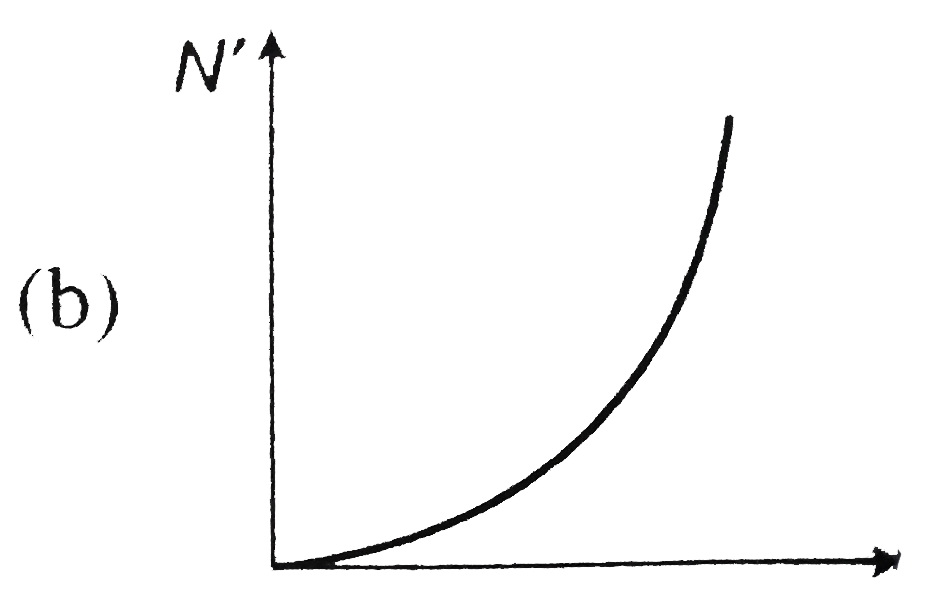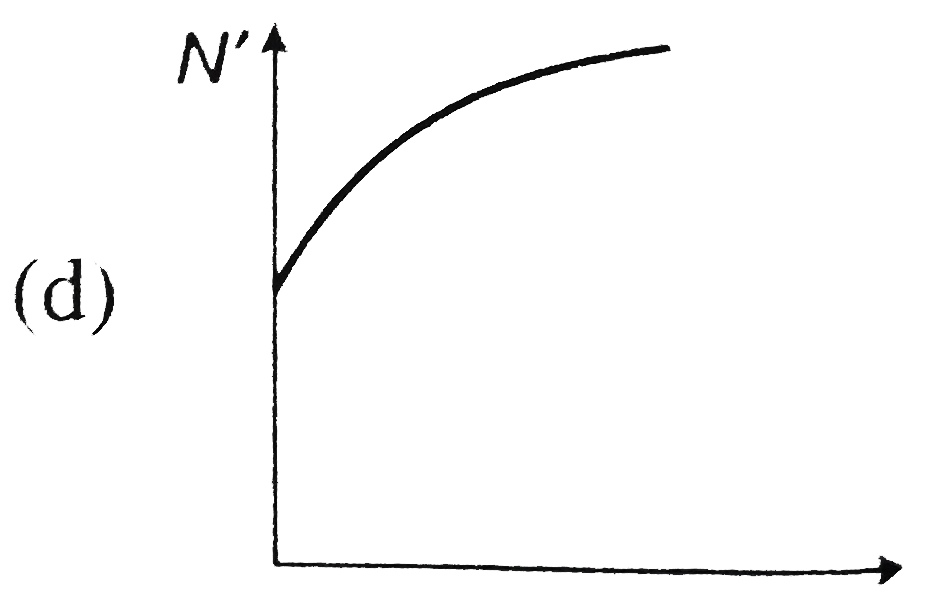What are the types in which radioactive decay takes place? If N is the number of nuclei in a radioactive sample and ΔN undergo decay in time Δt, show that
N(t)=N0e−λt
According to the law of radioactivity, the rate of disintegration (−ΔN/Δt) is proportional to N i.e.,
−ΔNΔt∝N
or −ΔNΔt=λN
where λ is a constant for the given substance and is called decay constant (or disintegration constant or radioactive constant or transformation constant). For a given element, the value of λ is constant but for different elements, it is different.
From the above equation, we have ΔNN=−λΔt
integrating above equation, we get
logeN=−λt+C .......(i)
where, C is the integration constant.
o determine C, We apply the initial conditions. Suppose there were N, atoms in the beginning, i.e. N=N0 at t=0. Then,
logeN0=C
Substituting this value of C in Eq.0). we have
logeN=−λt+logeN0
⇒logeN−logeN0=−λt
⇒logeNN0=−λt
⇒NN0=e−λt
⇒N=N0e−λt .......(ii)
where N0 and N are numbers of atoms in a radioactive substance at timet = 0 and after time t, respectively.
Similar Questions
Draw a graph showing the variation of decay rate (−dNdt) with number (N) of radioactive nuclei.
View SolutionState the law of radioactive decay. Plot a graph showing the number (N) of undecayed nuclei as a function of time (t) for a given radioactive sample having half life T1/2
Depict in the plot the number of undecayed nuclei at
(i) t=3T1/2 and (ii) t=5T1/2.View Solution
Knowledge Check
- Question 1 - Select One
20% radioactive sample decay in time t. How much sample decay in time 2t ?
A40%B36%C44%D80% - Question 2 - Select One
For any radioactive sample number of nuclei undergoing the decay per unit time is proportional to
Areciprocal of activity of sampleBmass of 1 mole of sampleCnumber of decayed nuclei in sampleDnumber of undecayed nuclei present at that time at the sample - Question 3 - Select One
The graph between number of decayed atoms N' of a radioactive element and time t is.
A .B
.B .C
.C .D
.D .
.
State the law of radioactive decay. Plot a graph showing the number (N) of undecayed nuclei as a function of time (t) for a given radioactive sample having half life T1/2
Depict in the plot the number of undecayed nuclei at
(i) t=3T1/2 and (ii) t=5T1/2.View SolutionObtain the relation N=N0e−λt for a sample of radio active material having decay constant λ where N is the number of nuclei present at instant t. Hence, obtain the relation between decay constant λ and half life T1/2 of the sample.
View SolutionObtain the relation N=N0e−λt for a sample of radio active material having decay constant λ where N is the number of nuclei present at instant t. Hence, obtain the relation between decay constant λ and half life T1/2 of the sample.
View SolutionState the law of radioactive decay.
Plot a graph showing the number (N) of undecayed nuclei as a function of time (t) for a given radioactive sample having half-life T12.
Depict in the plot the number of undecayed nuclei at (i) t=T12 and (ii) t=5T12.View SolutionFor a radioactive sample, at given instant, number of active nuclei is N and its decay constant is λ then the incorrect relation is–
View Solution
